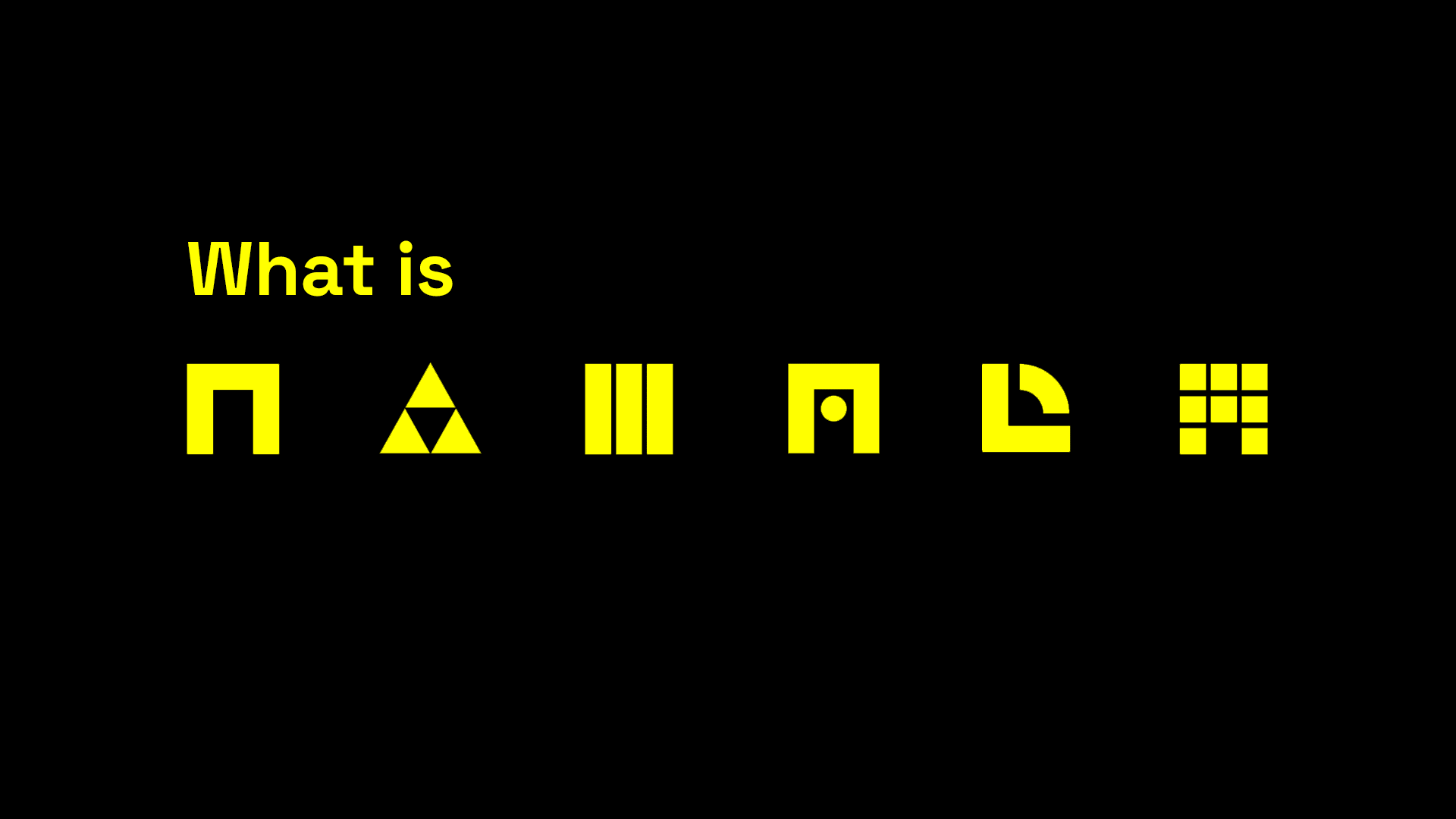
What is Namada?

TLDR: Namada is a proof-of-stake L1 for interchain asset-agnostic data protection. Namada natively interoperates with fast-finality chains via IBC. For data protection, Namada deploys an upgraded version of the multi-asset shielded pool (MASP) circuit that allows all assets (fungible and non-fungible) to share a common shielded set – this way, transferring a CryptoKitty is indistinguishable from transferring ETH, DAI, ATOM, OSMO, NAM (Namada's native asset) or any other asset on Namada. The MASP also enables shielded set rewards, a novel feature that funds data protection as a public good.
The reference implementation of the Namada protocol is built in Rust. Namada is an initial step towards the multi-chain vision of homogeneous architecture, heterogeneous security.
This article focuses on the most innovative features in Namada V1 at a high level and provides an overview of all the components that enable them.
For tech deep-dives:
Novel features for Namada users
The most innovative features that Namada brings to users are:
- Asset-agnostic shielded transfers: transferring any fungible and non-fungible tokens with Zcash-like data protection, including native and non-native tokens. This is enabled by the deployment of novel zk-SNARKs.
- Shared shielded set: a shielded transfer involving a Stargaze NFT is indistinguishable from an ATOM or NAM transfer. The MASP, an upgraded version of Zcash's Sapling circuit, enables all assets to share the same shielded set, so that data protection guarantees are not fragmented among individual assets and are independent to the transaction volume of a particular asset.
- Fast ZKP generation on edge devices: Namada is vertically integrated and users will be able to interact at mainnet with the protocol and send shielded transfers via browser applications.
- Low transaction latency and near-zero fees: via fast-proof generation and modern BFT consensus, Namada supports Visa-like speed with finality. Namada scales via fractal instances.
- IBC compatible: Namada interoperates with any fast-finality chain that is IBC compatible.
- Data protection as a public good: the Namada protocol incentives users that hold shielded assets, thereby contributing to the shared shielded set, via the latest update of the MASP circuit that includes the novel Convert Circuit. The shielded set in Namada is a non-exclusive and anti-rivalrous public good; the more people use shielded transfers, the better the data protection guarantees for each individual.
Namada's Cubic Proof-of-Stake (CPoS)
Namada's PoS mechanism is called Cubic Proof-of-Stake (CPoS). Here are some of the innovations that come with CPoS that are relevant to validators and delegators:
- Cubic slashing: penalties for safety faults in Namada are calculated following this cubic slashing algorithm. Simply put, the amount slashed can be significantly larger if more validators or a larger single validator commit faults at the same time. Cubic slashing encourages validators that operate multiple consensus nodes to deploy more diverse and uncorrelated setups. The slash rate for a given infraction $i$ is proportional to: $$(\sum_{i}^{i \in I} i.votingPower) ^ 3$$
Where I is the set of specific infractions within a (-1,+1) epoch range of the infraction in question. - Improved PoS guarantees: the cost of attacking Namada is quantifiable in all cases due to the automatic detection mechanism on which accounts contributed to the fault (validators, delegators, etc).
- Transaction fees in multiple assets: transaction fees can be paid in many tokens and which tokens are accepted can be updated via a governance vote.

Namada Governance
Namada's governance mechanism provides a formal on-chain mechanism through which future protocol changes or versions can be decided on. Namada's on-chain governance protocol supports text-based proposals with stake-weighted voting. Anyone with NAM tokens can vote in governance and delegators can overwrite their validators' votes:
{
"title": "<text>",
"authors": "<authors email addresses> ",
"discussions-to": "<email address / link>",
"created": "<date created on, in ISO 8601 (yyyy-mm-dd) format>",
"license": "<abbreviation for approved license(s)>",
"abstract": "<text>",
"motivation": "<text>",
"details": "<NIP number(s)> - optional field",
"requires": "<NIP number(s)> - optional field",
}Proposals in Namada use a similar format to BIP2
Public Goods Funding (PGF)
Namada will support both retroactive and continuous public-goods funding, both managed by a public-goods-funding council composed of a handful of trusted community members (elected by governance), who have joint (multisignature) authorisation over public-goods funding disbursement transactions.
- Continuous Public Goods Funding is regularly distributed to recipients over time, intended to cover costs.
- Retroactive Public Goods Funding is distributed in lump-sum payments based on past work, intended to warp the incentive space towards outcomes that benefit future users of Namada.
The council is elected bi-annually by Namada governance and subject to spending caps, but otherwise has latitude to fund public goods as council members see fit. However, there is also a veto mechanism that the community at large can employ as a check on a council member’s spending proposal.
- Follow @namadanetwork on Twitter to stay up-to-date!
Special thanks
To Bengt, Christopher, Adrian, Gavin for reviewing, additions, and graphs!
